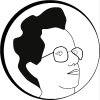
Deaf educational policies in DenmarkThe following was contributed by Shawn Mahshie at 6 Dec 1995, and posted to DEAF-L by earbear. Shawn is the author of "Educating Deaf Children Bilingually." Summary: This article discusses some recent test scores of children in Denmark. It is being made available to prevent any misunderstandings that may be going around regarding the current status of bi-bi education of deaf children in Denmark and Sweden. I want to share some results from the high school exit exams of the first bilingual class in Denmark. I now have the scores of all their exams, which all the students passed on schedule, with scores very much on par with their hearing peers in Danish written and oral, English written and oral, math, and physics/chemistry. In both the regular and the advanced exit exams (i.e., advanced exams are optional and are not normally taken by deaf students in this country) all but one student was above average in Danish oral (which, in this case, means reading and talking about aspects of Danish grammar, literature, etc. in sign language). In the essay section, which measures their writing, their results are particularly impressive, since they are graded in a pool with all other hearing students. I will share with you the scale upon which all students in Denmark are graded, so that the scores of the deaf students will have meaning when I share them. (Scores range up to 13 and down to 00, but the deaf students only fell around or above average, so I will only share the scores that are applicable to this class:) 6: Given for somewhat hesitant, but more or less satisfactory performance. The deaf students in this first bilingual class (which were not hand-picked, but represent all the students in Copenhagen that started kindergarten that year) scored as well or better than their hearing peers in their exit exams. I will only show the score related to Danish and English combined from both the regular and advanced exams: Danish Essay (written): (keep in mind, a score of 8 is average for hearing students) English Essay: In case I didn't make it clear above, it is important to note that deaf students' essays are placed in a pool with ALL essays of students taking the Danish/English exams for that year. In other words, these students are not graded by their teachers, or even anyone who knows they are deaf. If their sentences are-less-than grammatical or do not sound like a native speaker of Danish, they would be easily spotted by someone reading hundreds of essays by hearing Danish students. Keeping that in mind, for me, makes these results particularly telling. Danish Oral (reading comprehension): English Oral: While not all the deaf students sat for the English exams (optional) note that those who did scored very well in relation to hearing students. These results are published in a book written by the teachers of this class, "Bilingual Teaching of Deaf Children in Denmark: description of a project 1982-1992." Author: Wendy Lewis. Publisher: Doveskolernes Materialcenter, Kollegievej 1, Postboks 7930, 9210 Aalborg, SO, Denmark. Last update date: 2005 Nov 29 |
DonationDid this Web site help you? If yes, you may want to consider making a donation to me. When making a donation, please tell me what additional information could I add to the Web site, to make it even more helpful for you and people like you. |